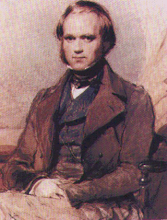
The island of Madagascar is separated from Africa by the Mozambique Channel, 460 km across at its narrowest point and up to 3,000 meters deep. Scientists have long debated how the four-legged inhabitants of Madagascar got there, especially the non-aquatic ones.
Seventy years ago paleontologist George Gaylord Simpson proposed a “sweepstakes” model in which small vertebrates could have been transported from the African mainland to Madagascar on natural rafts of floating vegetation.
The problem with Simpson’s idea was that today’s currents flow westward from Madagascar towards Africa. But 60 million years ago continents lay in different positions, and new paleo-oceanographic modeling shows that there was a strong current from Africa to Madagascar, which would have provided the route for the sweepstakes rafts with their accidental migrants onboard.
It took a while, but Simpson's 20th century hypothesis was verified with the help of 21st century technology.
References: http://www.oceandots.com/indian/mozambique-channel/
Ali, Jason R., and Huber, Matthew, 2010. Mammalian biodiversity on Madagascar contolled by ocean currents. Nature 463:
Map is from http://www.embassy.org/madagascar/madagasc.jpg


No comments:
Post a Comment